DOMESTIC VIOLENCE
Breaking the Silence: Addressing Domestic Violence in Latino Families
What is Domestic Violence?

Domestic violence (DV), or Intimate Partner Violence (IPV), is a pattern of abusive behaviors used by one partner to exert power and control over the other in a relationship.
This abuse can take various forms, including: physical, sexual, emotional, economic, psychological, or technological actions, or threats of such actions. It encompasses behaviors aimed at intimidating, manipulating, humiliating, isolating, frightening, terrorizing, coercing, threatening, blaming, hurting, or injuring the victim.
The goal of domestic violence is to dominate and maintain control over the other person in the relationship (link).
Types of abuse can range:
- Physical
- Psychological
- Emotional
- Sexual
- Technological
- Financial, and
- Immigration Status
Source: Women Against Abuse
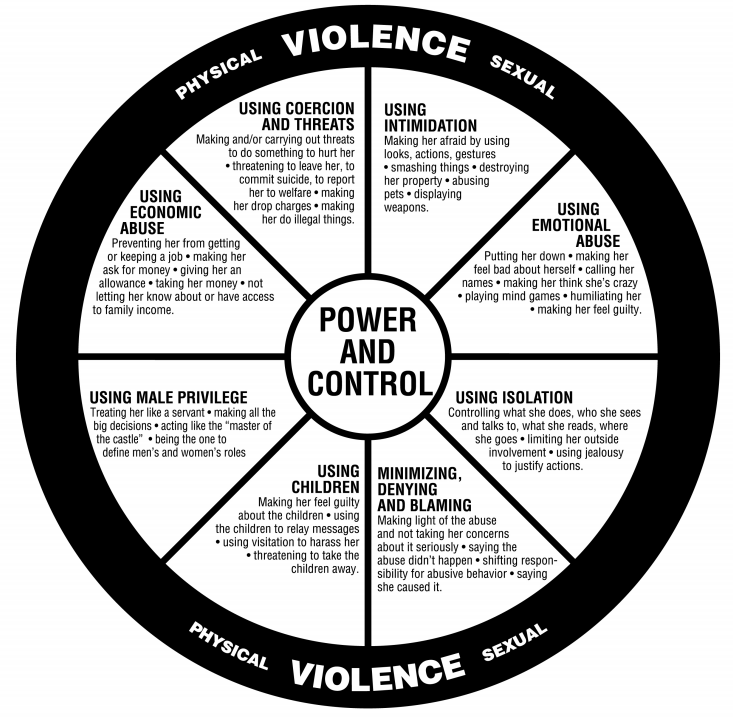
About 1 in 3 Latinas (34.4 %) will experience Intimate Partner Violence (IPV) during her lifetime & 1 in 12 Latinas (8.6%) has experienced IPV in the previous 12 months. (link)

High-Level Challenges:
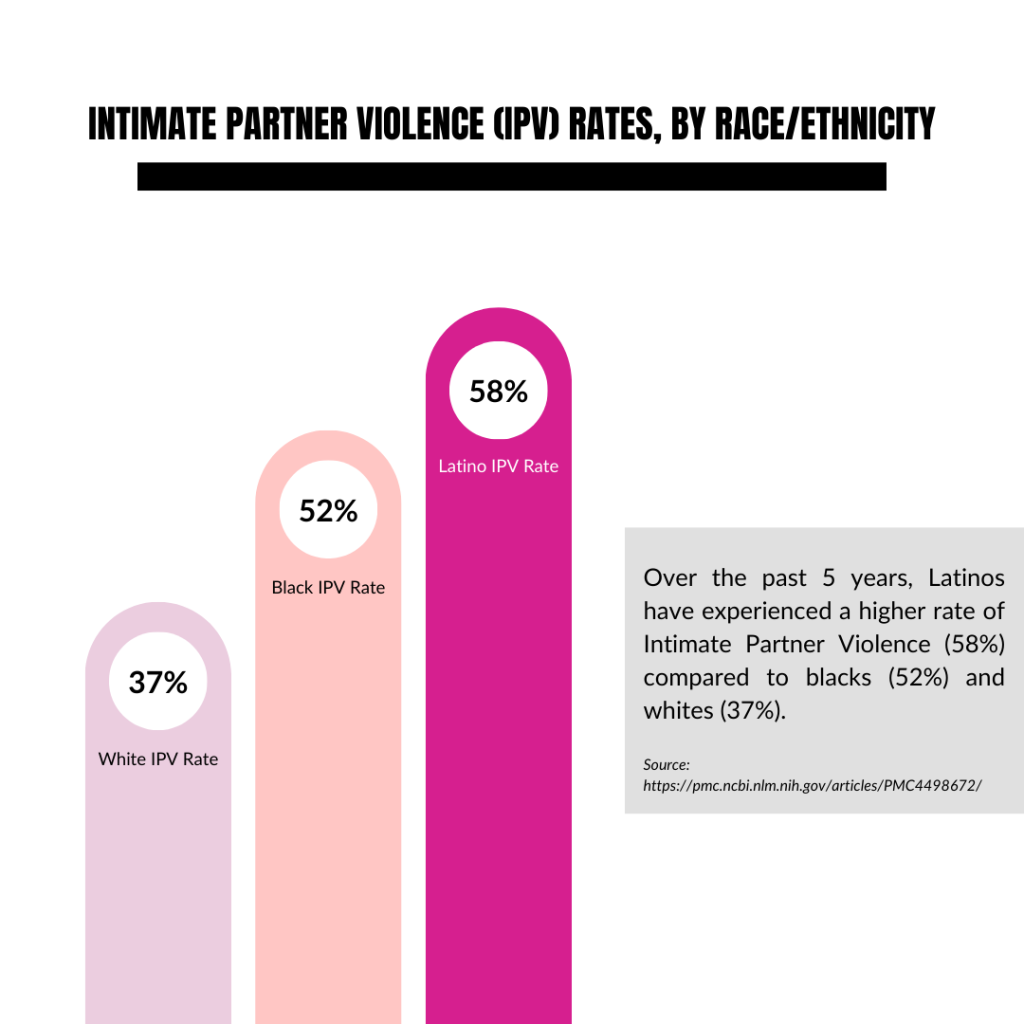
Citizenship status: Individuals may not report domestic violence due to fear of legal repercussions or mistrust of law enforcement. Some individuals fear deportation and legal consequences. This may also include language barriers which make it difficult to find resources, file a report, or seek help. 31.7% of immigrants sought any formal help regarding their domestic violence situation compared to 33.4% non-immigrant and 65.9% of immigrants sought informal help compared to 72.8%. (link & link)
Children: Latinos may experience economic instability which can make it more difficult for victims to leave abusive relationships or access services. As a result, children are severely impacted. “This becomes harder when children are involved. 80-90% of domestic violence victims abuse or neglect their children,” (link)
Cultural Factors: Traditional values around family and gender roles can sometimes discourage victims from seeking help because there may be pressure to maintain family unity, even at the cost of individual safety or due to feelings of shame or guilt. (link)
Key Statistics:

Why This Issue Is Important to Latinos
Domestic violence tends to be underreported for a few reasons within the Latino community for several reasons, primarily due to immigration status, which prevents victims from reporting for fear of deportation. During situations of domestic violence, a partner may sabotage their partner economically to prevent them from leaving, not to mention the costs associated with reporting a domestic violence case which further discourages victims from reporting. There are high rates of domestic violence internationally, many of which are not reported to the police.
Use of Children & Immigration Abuse
Immigration Abuse
- Dutton, Orlof, and Aguilar Hass (2000) found that 72.3% of Latinas surveyed who experienced domestic violence reported that their spouses never filed immigration petitions for them, even though 50.8% of the victims qualified. (link)
- More severe forms of intimate partner violence are disproportionately affecting women. Immigrant women are 1.9 times more likely to be victims of intimate partner femicide than US born women. (link)
- A recent study revealed that immigrant Latina survivors reported a decreased likelihood of calling the police due to heightened immigration enforcement policies and increased fear of deportation. (link)
Use of Children
- Underreporting Due to Cultural and Legal Concerns: Cultural expectations often deter Latino women from reporting domestic violence incidents. Concerns about family unity and community stigma contribute to this underreporting, complicating efforts to address this issue effectively.
- Cultural Factors: Cultural dynamics within Latino families, such as strong family loyalty (familismo) and traditional gender roles, can influence how IPV manifests and is addressed. These factors may affect the reporting and intervention processes related to domestic violence. PMC
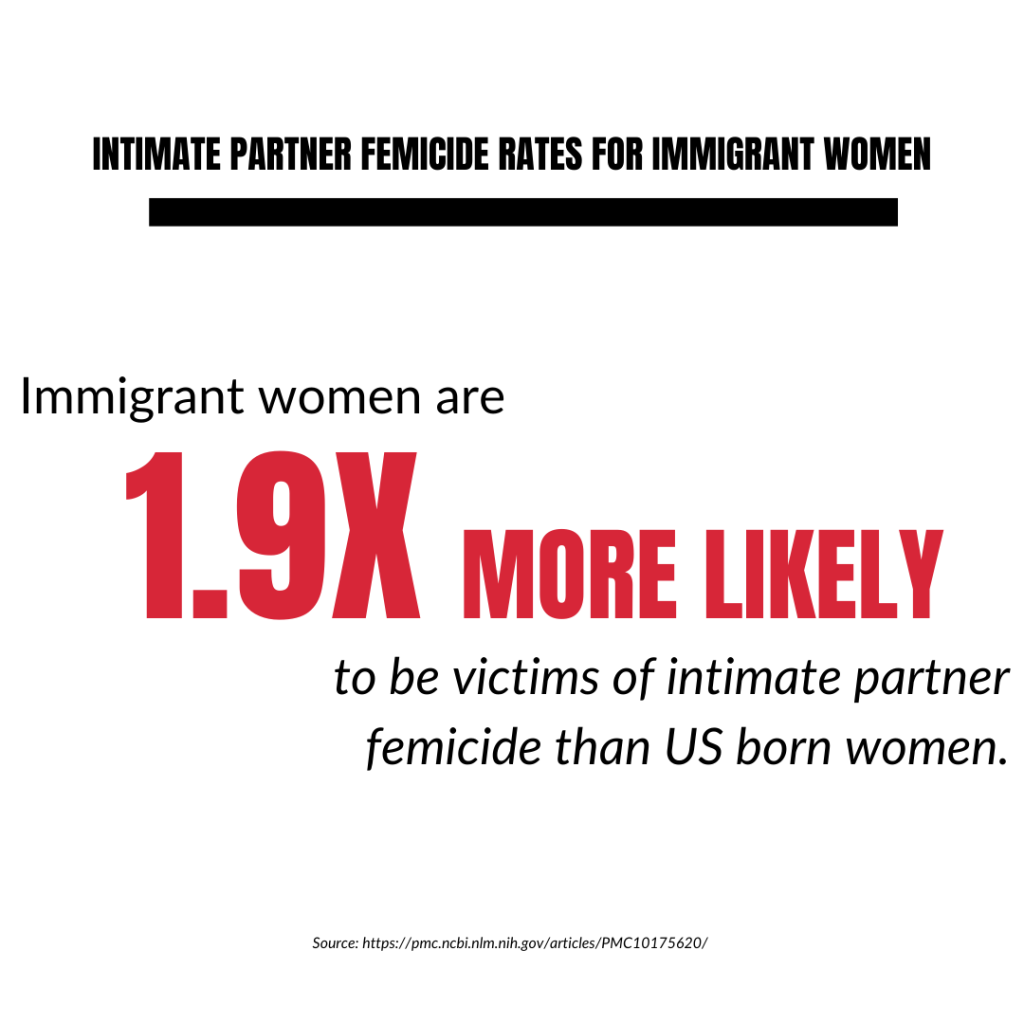

Financial & Emotional Abuse
Financial Abuse
- Financial abuse occurs in 99% of domestic violence cases, encompassing stealing money, credit, property, or identity. Survivors and their families need economic security, including access to benefits and paid leave. Research shows that access to economic resources is the strongest predictor of whether a survivor will be able to permanently separate from their abusive partner,” (link)
- Women who reported financially dependence on their partner were ate a higher risk of victimization,” (link)
Emotional Abuse
- Previous studies have demonstrated that 25-33% of Latinas experience emotional abuse, significantly higher than the 4.6% reported in studies of nationally representative U.S samples (link)
- In one study, 19% of pregnant Latinas reported emotional violence during pregnancy by their partner (link)

Data: Key Statistics
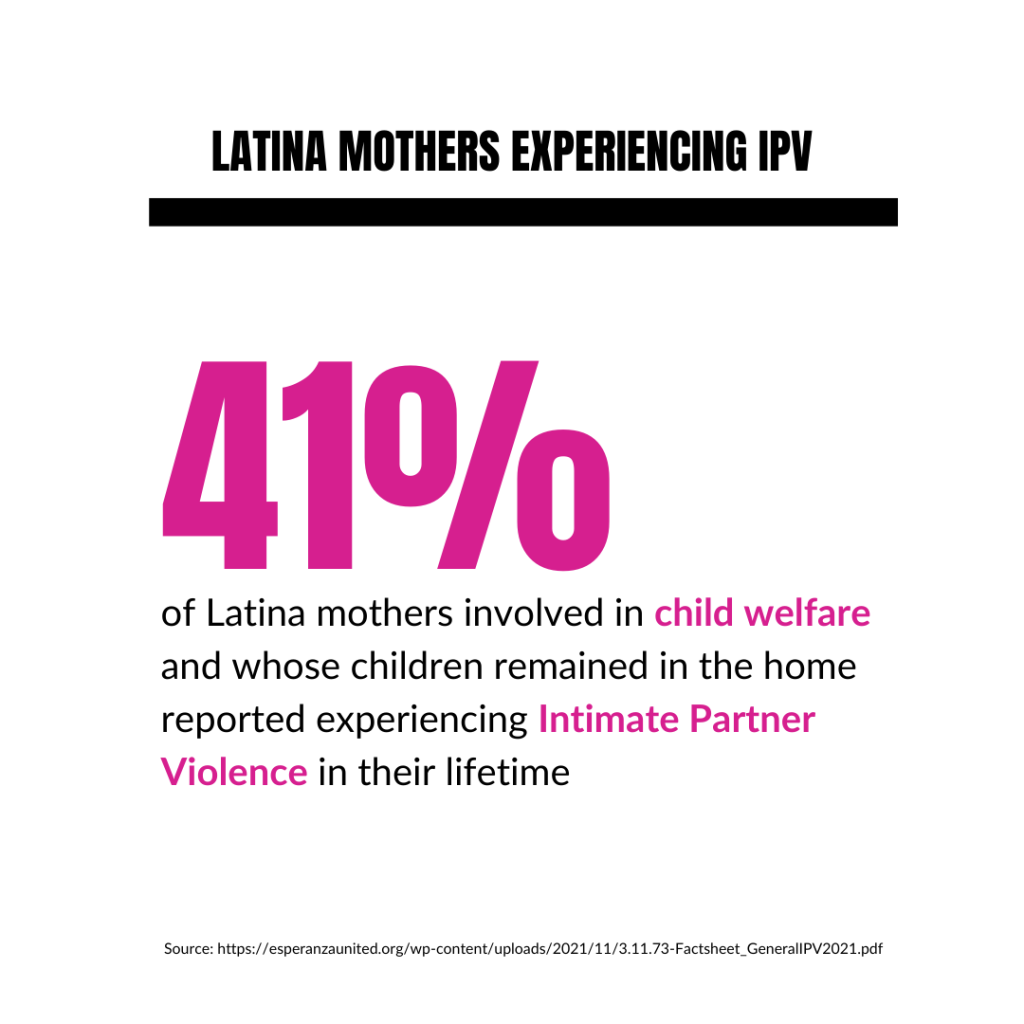
Prevalence of Intimate Partner Violence (IPV) in Latino Communities
- 41% of Latina mothers involved in child welfare and whose children remained in the home reported experiencing Intimate Partner Violence in their lifetime. link
- In a large national study of cohabiting couples, a higher incidence of IPV was noted among Hispanic couples (14%) in comparison to non-Hispanic White couples (6%) even after controlling for socioeconomic status. (link)
- Hispanics also reported a higher recurrence of IPV (58%) than both non-Hispanic Black (52%) and White (37%) couples. (link)
- Of the 695,060 known incidents of intimate partner violence in 2019, only 58% were reported to police, according to a Bureau of Justice Statistics report. (link)
- 40% of domestic violence victims never contact the police. link
- About 1 in 3 Latinas (34.4 %) will experience Intimate Partner Violence (IPV) during her lifetime & 1 in 12 Latinas (8.6%) has experienced IPV in the previous 12 months. (link)
Help-Seeking Behavior & Awareness
- “One study found that only 1 in 4 Latinas had heard of Intimate Partner Violence protective orders.” link
- “Nearly half of Latinas in one study did not report abuse to authorities.
- Reasons for underreporting may include fear and lack of confidence in the police, shame, guilt, loyalty, and/or fear of partners, fear of deportation, and previous experience with childhood victimization,” (link)
- Latinas, especially undocumented ones, tend to seek informal support (family, female friends, neighbors) more than formal services.
- “Like many survivors, Latinas prefer to tell family members, female friends, or neighbors about IPV. This is especially true for undocumented Latinas who were more likely to seek out informal support for IPV as compared to Latinas with resident or citizen status. However, for both groups, formal help-seeking was more likely when experiencing severe physical abuse” link
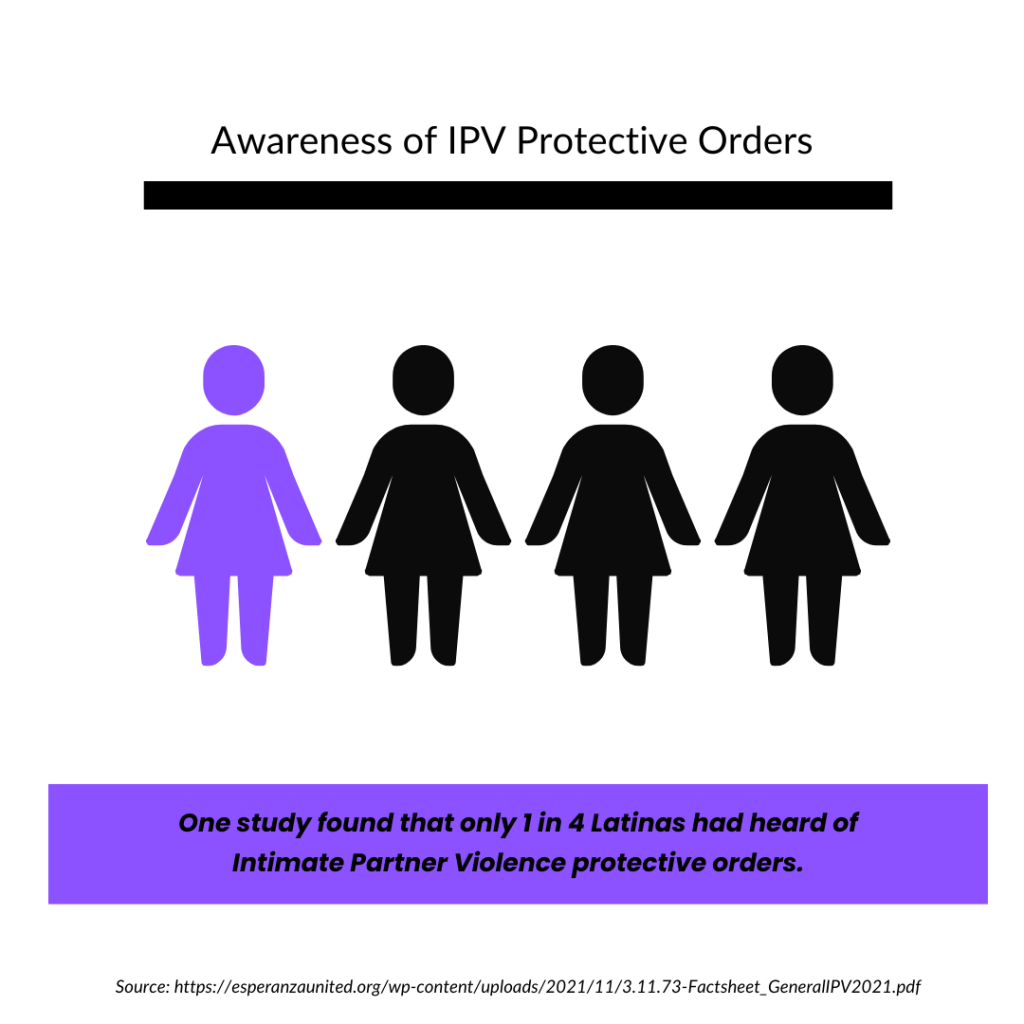
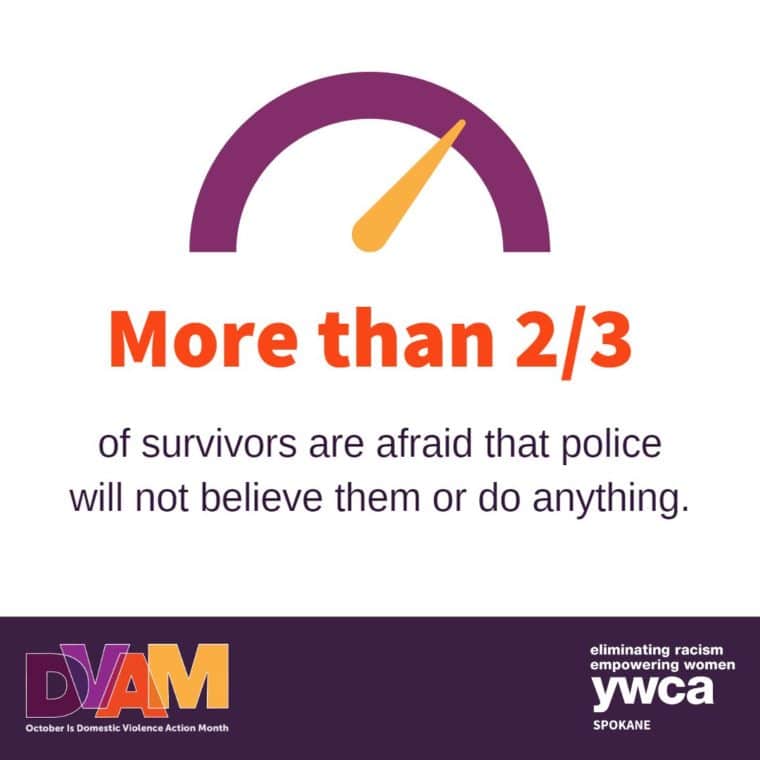
Law Enforcement & Community trust
- Many victims of domestic violence struggle with trust issues regarding law enforcement.
- The National Domestic Violence Hotline also found that two-thirds or more of women surveyed were afraid the police would not believe them or do anything. (link)
This widespread concern shows how important it is that law enforcement take the time to ensure victims feel heard, believed, and supported when responding to domestic violence calls. – YWCA Spokane
Barriers: Immigration Status, Fear, and Economic Control
- 78% of immigrant Latina survivors in a national survey cited immigration enforcement fear as a barrier to reporting or help-seeking.
- Immigration status is frequently used as a control mechanism, discouraging women from leaving.
- Economic sabotage of Latina partners includes:
- On-the-job harassment and surveillance
- Lying about childcare
- Denying access to a driver’s license
- Sending them temporarily to their country of origin
- “Economic sabotage, such as when an abuser interferes with their partner’s work outside the home, has also been documented. One study reported abusive strategies such as: on the job surveillance, on the job harassment, and work disruption tactics. However, they also found unique strategies experienced by Latinas, such as denying access to a driver’s license, lying about childcare arrangements, and sending the partner to their country of origin temporarily” link
- In one study focusing on socioeconomic status of diverse sexual minority women, household income more than $50,000 was associated with fewer reports of severe IPV, compared with those reporting a household income of less than US $100,000.” link
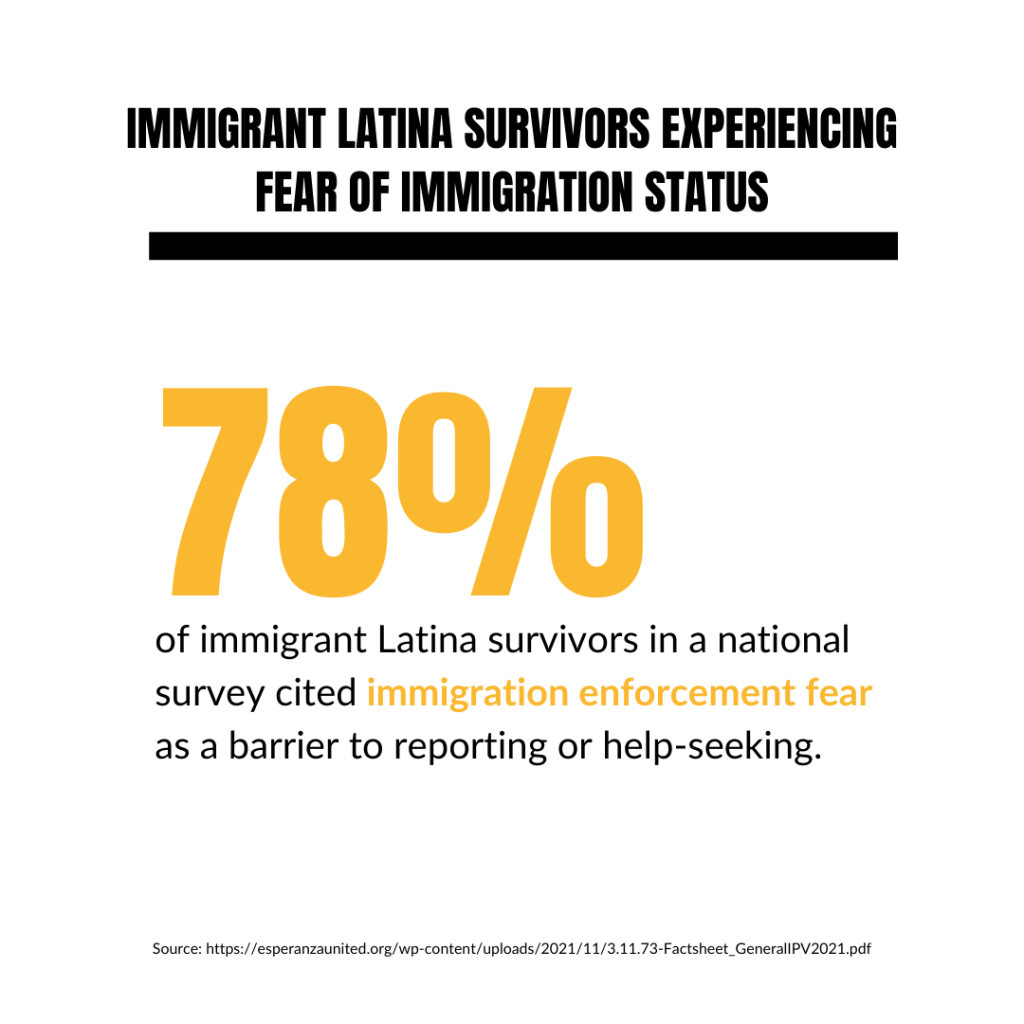

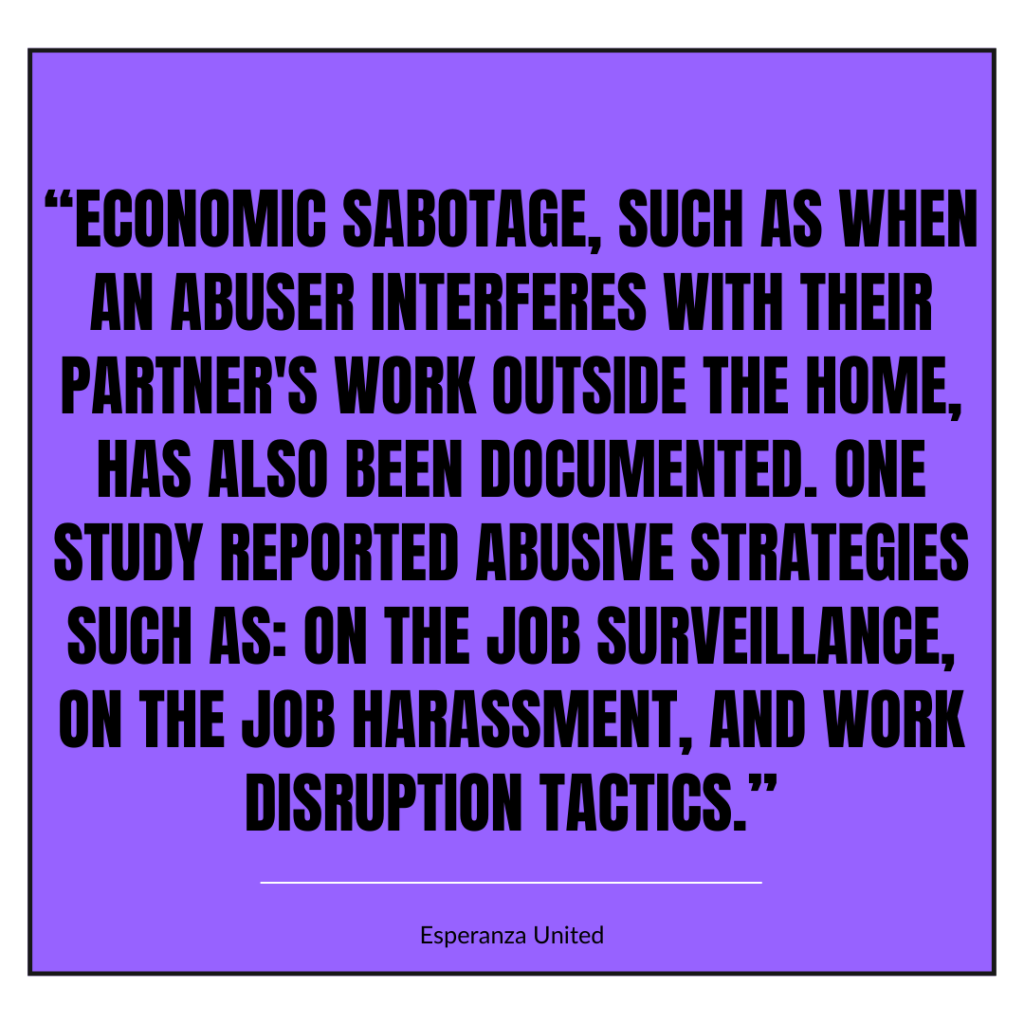
Using Children as a Control Tactic
- “Threatening Latina survivors to take away their children if they leave their parents was an especially powerful strategy used by men against undocumented, non-English speaking women.” link
- Prevalence of Child-Related Abuse Tactics: A study involving 277 homeless or unstably housed mothers revealed that many reported their abusive partners used their children to control or harm them. WSCADV
- Psychological Impact on Survivors: The same study found that, even after accounting for other forms of abuse, the use of children as a control tactic significantly predicted increased anxiety and PTSD symptoms in survivors over time. WSCADV
- Coercive Control Post-Separation: Research indicates that domestic violence perpetrators may continue to exert coercive control over their children after separation, employing tactics such as threats, intimidation, and emotional abuse, which mirror the abusive behaviors previously directed at their partners. Wiley Online Library
- Recognition as Child Maltreatment: Exposure to IPV, including scenarios where children are used as tools of control, is increasingly recognized as a form of child maltreatment, associated with significant mental health impairments and other adverse outcomes. PMC
Exposure to Domestic Violence
- Exposure to Domestic Violence: Studies have shown that a significant number of Latino children witness domestic violence, which can include scenarios where they are used to manipulate or control a partner. Such exposure has long-term psychological and behavioral impacts on children. PMC
- A longitudinal study indicated that approximately 45% of Latina females and 50% of Latino males reported witnessing physical violence between their parents during childhood. Such exposure can lead to the perpetuation of violence in their own future relationships. Wikipedia
- Intergenerational Transmission of Violence: Exposure to domestic violence during childhood in Latino families is linked to the perpetuation of similar behaviors in adulthood. Children who witness such violence are more likely to replicate these patterns in their future relationships, continuing the cycle of abuse. (link)
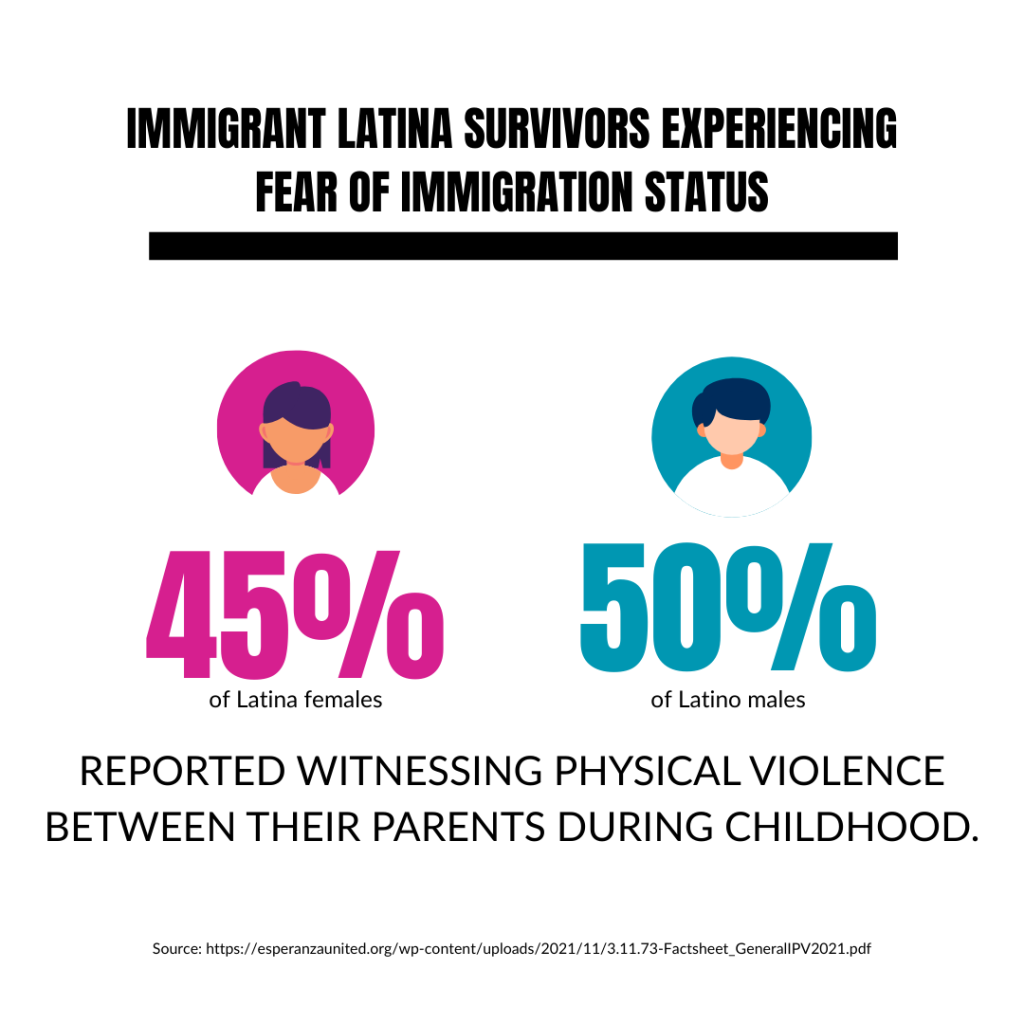
Exposure to Domestic Violence
- Cultural Factors: Cultural dynamics within Latino families, such as strong family loyalty (familismo) and traditional gender roles, can influence how IPV manifests and is addressed. These factors may affect the reporting and intervention processes related to domestic violence. PMC
- Increased Risk of ACEs: Latino children face nearly double the risk of experiencing ACEs compared to their white peers, increasing their susceptibility to post-traumatic stress disorder (PTSD) and related symptoms. Factors contributing to this heightened risk include immigration challenges, discrimination, community violence, and socio-economic hardships. (link)
Intimate Partner Violence Among Latino Men
- 1 in 4 Latino men (approximately 26.9%) experience contact sexual violence, physical violence, and/or stalking by an intimate partner in their lifetime. (link)
- Among Latino male survivors, nearly 1 in 5 (19%) report severe physical violence (e.g., being beaten, slammed against something, or burned) by an intimate partner. CDC, NISVS, 2015
- Despite these numbers, Latino male survivors often do not seek help due to stigma, fear of not being believed, or lack of culturally competent services. National Resource Center on Domestic Violence (NRCDV), 2022

Programming, Policies & Recommendations
Current Policies
Note: These are existing policies we’ve compiled that are related to Domestic Violence.
- Victims of Crime Act (VOCA): “A 40% cut to VOCA funding is forcing victim service programs to reduce or eliminate services, lay off staff, and, in some cases, close their doors. VOCA uses funds from the Crime Victims Fund (CVF) to support services to over 6 million victims annually through almost 6,500 direct service organizations, including domestic violence shelters, rape crisis centers, and child abuse treatment programs. However, decreased deposits into the CVF have led Congress to cut funding by almost $600 million and, as a result, countless victims in a crisis will not be able to find help.” (link)
- Security and Financial Empowerment (SAFE) for Survivors Act: “Allows victims to take time off work without penalty, requires employers to provide accommodations, offers unemployment benefits, and establishes insurance protections to support survivors, ensuring they aren’t punished for their abusers’ crime,” (link)
Policy and Programmatic Recommendations
Data-driven solutions to further minimize infectious disease spread among U.S. Latinos.
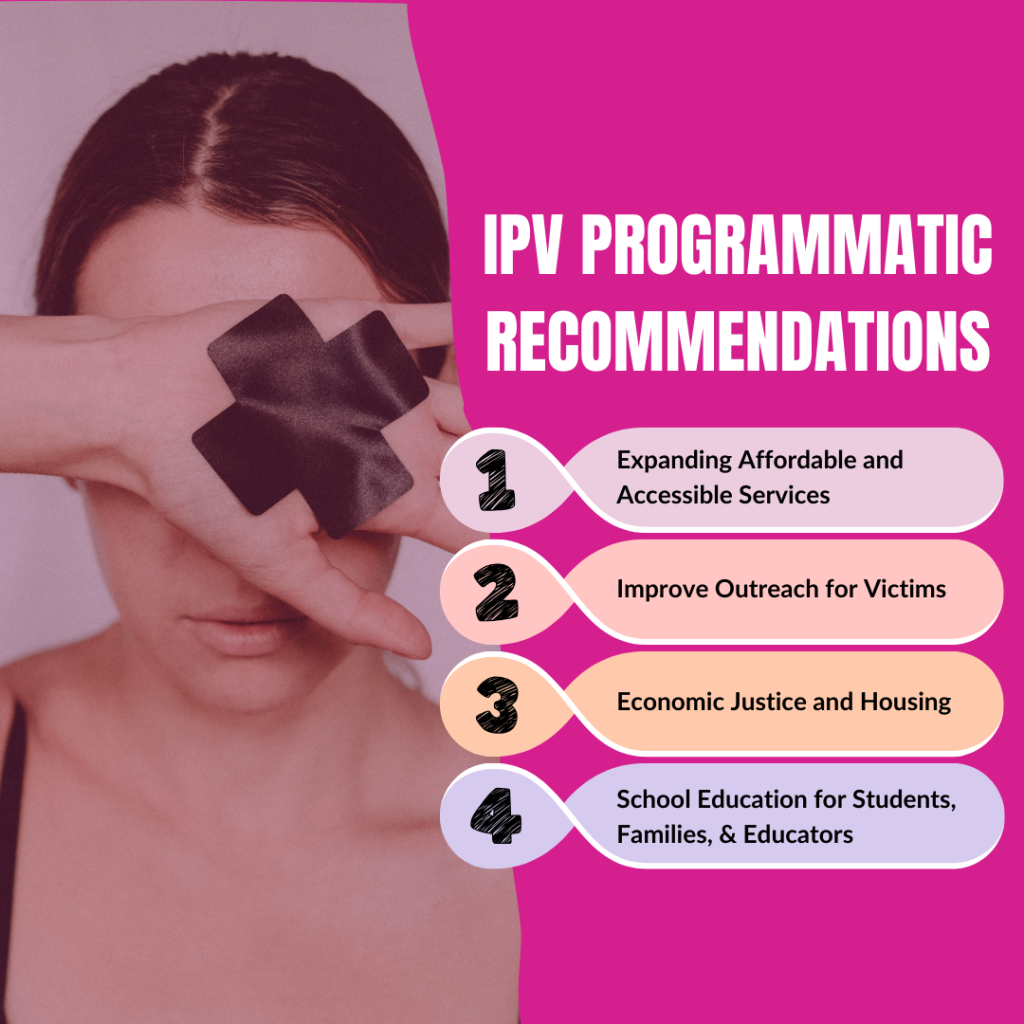
Programmatic Recommendations:
Expanding Affordable and Accessible Services
Providing comprehensive support services is crucial for families experiencing domestic violence. These services include legal assistance, court advocacy, employment support, safety planning, transportation assistance, shelter, and emotional support. These will be helpful resources that are especially vital for low-income families and youth.
- Recommendation: Ensuring that all services are affordable and accessible 24/7, offering to all by providing it 24/7 in their own language support and multiple formats, and available in many formats including digital and in-person options.
- Advocating: This may mean finding more funding for organizations providing these services to help reduce their costs and expand the services availability and duration. Programs like: https://www.thehotline.org/

Improve Outreach for Victims
Data reveals that cases of Domestic Violence is underreported, and victims are less likely to seek formal support. versus informal. Numerous barriers hinder victims from accessing help. regarding support. link and link
- Recommendation: Promote 24/7 Emotional Support Services and Know-Your-Rights Resources. Many survivors are unaware that free, confidential emotional support is available 24/7 through phone, text, and online chat services. We recommend increasing promotion of these resources to ensure that individuals know help is always available. Outreach should also include tools like a “Know Your Rights in a Relationship” toolkit to empower survivors with information and support in a culturally relevant and accessible way.
- Advocating: Raise awareness of available resources available to help support victims and ensure that people feel comfortable reporting avenues for domestic violence.
REVIEW TOOLKITS AVAILABLE HERE:
- Love Is Respect – Legal Rights Guide
https://www.loveisrespect.org - Futures Without Violence – Immigrant Survivor Rights
https://www.futureswithoutviolence.org - WomensLaw.org – Know Your Rights
https://www.womenslaw.org/laws - Texas Advocacy Project – Teen Rights Toolkit (PDF)
https://www.texasadvocacyproject.org
Economic Justice and Housing
Research shows “A study examining maternal emotional health found that employment and domestic violence services are key resilience factors for Latina families. Similarly, mothers’ employment and access to these domestic violence services correlate were associated with a greater maternal acceptance of their children’s negative emotions” (link).
- Recommendations: Support Economic Stability for Survivors
Provide access to financial assistance, safe housing, transportation, and healthcare benefits for individuals experiencing domestic violence — for as long as they need support. This should also include offering paid leave for survivors, giving them time to heal without the added burden of income loss or job insecurity. - Advocate: Ensuring organizations that this is a service provided by organizations in addition to the other resources being provided. These services alongside other resources.

School Education for Students, Families, & Educators
Every student, from preschool to high school, deserves safety and should have access to a high-quality and safe school environment. This includes education on learning about boundaries and healthy relationships and boundaries. (link)
- Recommendation: Partner with domestic violence organizations to provide resources and workshops to students, families, and educators which will support them, teach them skills, and inform them on healthy relationships and support strategies.
- Advocate: Engage or Talk to your school leadership team and your school boards members to implement and see what resources can be provided at the school sites to ensure trauma-responsive training and is being provided in addition to resources that help prevent family violence.
Policy Recommendations:
Informed by Evidence: Policy Recommendations from Experts
- Victims of Crime Act (VOCA) (link)
- Recommendation: VOCA should have a stable budget or an increase in their budget to allow them to continue to provide resources and be able to expand them.
- Advocating: “Talk to your Congressional representatives to co-sponsor and pass the Crime Victims Fund Stabilization Act and help domestic violence programs keep their doors open.”
- Security and Financial Empowerment (SAFE) for Survivors Act (link)
- Recommendation: That the Security and Financial Empowerment (SAFE) for Survivors Act pass.
- Advocating: Contact your Congress representatives to urge them to pass the Security and Financial Empowerment (SAFE) for Survivors Act using YWCA’s template linked here.
Call to Action: Get Involved
Domestic violence affects every community and our Latinx families are no exception. It is time to speak up, break the silence, and support those who are suffering in silence. No one deserves to live in fear. Together, we can create a culture of respect, safety, and love. Below are some suggestions to get involved and support your loved ones.
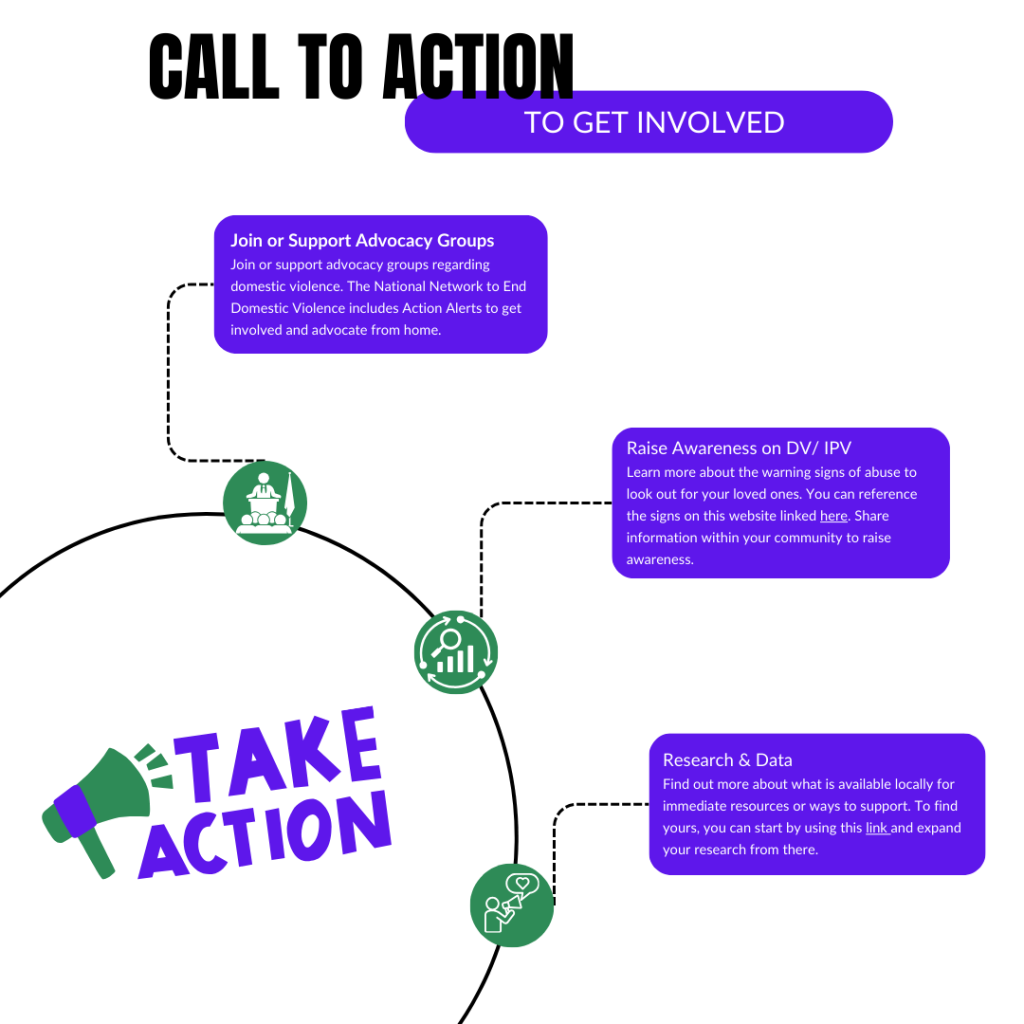
Advocate: Join or support advocacy groups regarding domestic violence. The National Network to End Domestic Violence includes Action Alerts to get involved and advocate from home. You can see their current Action Alert linked here.
Raise Awareness: Learn more about the warning signs of abuse to look out for your loved ones. You can reference the signs on this website linked here. Share information within your community to raise awareness. You can share this Know Your Rights in a Relationship with your friends, family, and community. You can share these on social media or directly with the community.
Research: Find out more about what is available locally for immediate resources or ways to support. To find yours, you can start by using this link and expand your research from there.
By getting involved and staying informed, you could save someone’s life and make a positive impact.
Partners and Resources for Families
🌍 Resources for Families
We believe strong families build strong communities. Our Family Resource Center is here to support you with culturally relevant tools, information, and services to help you and your loved ones thrive. Whether you’re looking for health resources, parenting support, legal aid, or community programs — we’re here to connect you with what you need, in a language and setting that feels like home.
National Domestic Violence Hotline
Description: Available via phone call, website chatting, and text to provide free and confidential information and support 24/7 regarding domestic violence including virtual resources.
Website: https://www.thehotline.org/
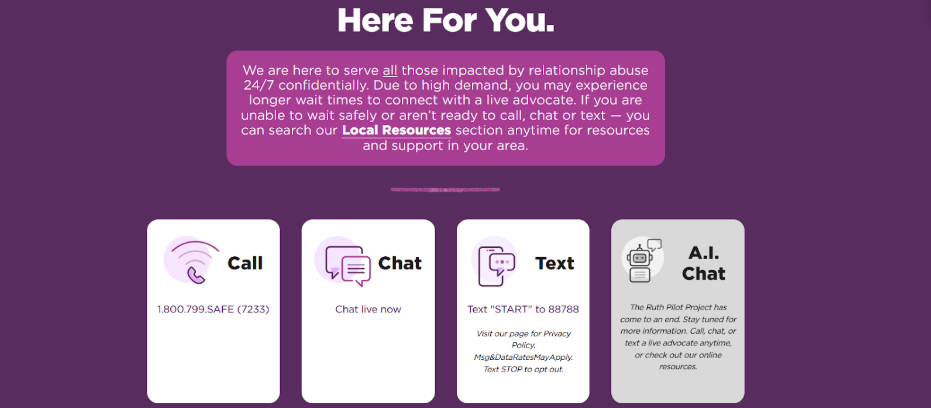
Love is Respect
Description: Provides virtual resources including information on healthy relationships and your rights in a relationship. It also has the option to call, chat, or text someone confidentially for support and information for free at all times.
Website: https://www.loveisrespect.org/
Create a Safety Plan: https://www.thehotline.org/plan-for-safety/create-your-personal-safety-plan/

2-1-1 – Information and Referral Services
Description: 2-1-1 connects individuals and families with local services including shelter, legal assistance, transportation, healthcare, food, and domestic violence resources. Support is available 24/7 by phone or online — confidential and free.
Website: https://www.211.org/
Find your Local 2-1-1: Click here.

DomesticShelters.org
Description: Searchable directory of shelters, legal help, counseling, and support groups — can be filtered by location, language, services offered, and populations served.
Website: https://www.domesticshelters.org
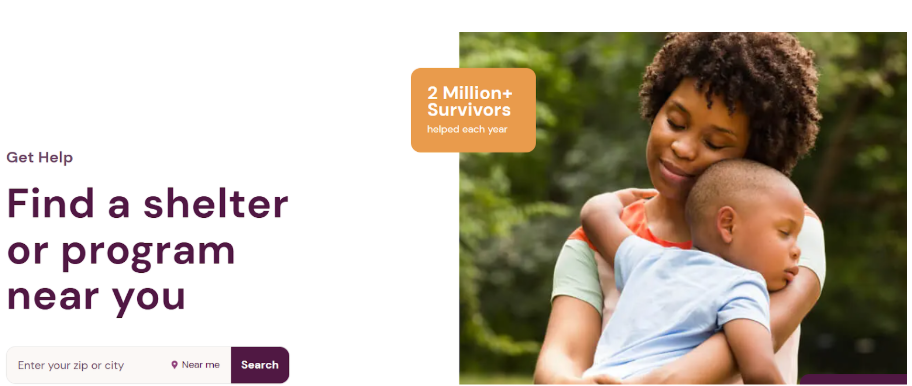
Additional Resources here:
- YWCA
- Description: More than 150 YWCAs across 44 states provide gender-based violence services… YWCA’s provide safe and secure housing, crisis hotlines, counseling, court assistance, and other community and safety programs to more than 535,000 women, children, and families.
- Website: https://www.ywca.org/what-we-do/health-safety/domestic-and-sexual-violence-services
- Esperanza United
- Description: Offers training, technical assistance, and critical resources to help further promote the need for strong communities working together. Provides the foundation on how best to support Latinx survivors, families, and communities gain greater safety, connectedness, and self-sufficiency.
- Website: https://esperanzaunited.org/en/
- Office of Family Violence Prevention and Services
- Description: Provides a list of organizations that provide resources regarding domestic violence.
- Website: https://www.acf.hhs.gov/ofvps/fact-sheet/domestic-violence-resource-network-organization-descriptions
- Family Crisis Center
- Description: Crisis support when you need it most. The Family Crisis Center offers 24-hour emergency shelter, crisis intervention, hospital advocacy, and support services for individuals and families experiencing domestic or sexual violence. Services are trauma-informed, confidential, and available in English and Spanish.
- Website: https://www.familycrisisctr.org/
- Strong Hearts Native Helpline
- Description: Culturally appropriate, confidential support for Native American and Alaska Native survivors of IPV and sexual violence.
- Website: https://strongheartshelpline.org
- The Network/La Red
- Description: Provides support and advocacy specifically for LGBTQ+, polyamorous, and kink survivors of partner abuse.
- Website: https://www.tnlr.org
- Tahirih Justice Center
- Description: Offers free legal and social services to immigrant women and girls fleeing gender-based violence, including IPV, human trafficking, and forced marriage.
- Website: https://www.tahirih.org
- Futures Without Violence
- Description: FUTURES has worked to build thriving families and communities, free from violence, and filled with hope and opportunity.
- Website: https://futureswithoutviolence.org/priority/domestic-sexual-violence/
- WomensLaw.org
- Description: Provides free legal information and resources for victims and survivors to understand their rights.
- Website: https://www.womenslaw.org/laws
- Texas Advocacy Project – Teen Rights Toolkit (PDF)
- Description: provides advice over the phone, support with do-it-yourself legal filing processes, and complete client representation.
Our experienced attorneys guide and advocate for you through the entire process, and our services are always completely free. - Website: https://www.texasadvocacyproject.org/
- Hope Line: 800-374-HOPE
- Description: provides advice over the phone, support with do-it-yourself legal filing processes, and complete client representation.
Please use these resources to better guide you and your family to ensure you have access to information and resources related to IPV.
🌍 Additional Resources and Data for Partners
This section includes culturally responsive, evidence-based resources from organizations across the country. Whether you’re a service provider, community leader, or advocate, these tools can help strengthen your work and uplift the communities we serve together.
Resources & Data for Partners
1. Esperanza United (Formerly Casa de Esperanza)
Description: Offers training, technical assistance, and critical resources to support Latinx survivors, families, and communities. Focuses on culturally responsive strategies to promote safety, connectedness, and self-sufficiency. Includes the National Latin@ Network.
Website: https://esperanzaunited.org
2. Office of Family Violence Prevention and Services (OFVPS)
Description: Maintains a comprehensive directory of national organizations focused on domestic violence prevention and support. Great for discovering DV resource networks.
Website: https://www.acf.hhs.gov/ofvps/fact-sheet/domestic-violence-resource-network-organization-descriptions
3. WomensLaw.org – Know Your Rights
Description: Offers plain-language legal information and tools to help survivors understand their rights across all 50 states.
Website: https://www.womenslaw.org/laws
4. Texas Advocacy Project – Teen Rights Toolkit
Description: Provides downloadable legal resources focused on the rights of teens in abusive or controlling relationships.
Website: https://www.texasadvocacyproject.org
5. National Resource Center on Domestic Violence (NRCDV)
Description: Offers national training, research, and prevention strategies with a focus on equity and underserved communities.
Website: https://www.nrcdv.org
6. Futures Without Violence
Description: Focuses on prevention, education, and systems change across healthcare, education, and justice systems. Offers free toolkits for advocates and institutions.
Website: https://www.futureswithoutviolence.org
7. National Network to End Domestic Violence (NNEDV)
Description: Provides legal advocacy, technology safety, and economic justice resources. Hosts the Safety Net Project focused on tech-facilitated abuse.
Website: https://nnedv.org
8. Toolkit: Supporting Survivors of Domestic and Sexual Violence in Latinx Communities
Description: A joint resource from NRCDV and Esperanza United’s National Latin@ Network offering culturally specific strategies and support tools.
Website: https://www.nrcdv.org/publications/supporting-survivors-domestic-and-sexual-violence-latinx-communities
🔍 Find Local or Youth-Focused Resources
National Domestic Violence Hotline – Local Resources Tool
Description: Search by ZIP code to find local shelters, counseling services, and support organizations.
Website: https://www.thehotline.org/get-help/local-resources/
WomensLaw.org – State Resource Maps
Description: Legal help and shelter referrals by state. Great for finding tailored services and legal aid.
Website: https://www.womenslaw.org/find-help
Love Is Respect – Resources for Youth & Young Adults
Description: Youth-centered resource hub with text/chat help, education, and support for dating violence.
Website: https://www.loveisrespect.org/resources/
References
Please review here for all references and citations.
California Partnership to End Domestic Violence. (2023). Domestic violence fact sheet. Retrieved December 14, 2024, from https://www.cpedv.org/sites/main/files/domestic_violence_fact_sheet_2023_updated08312023.pdf
California Partnership to End Domestic Violence. (n.d.). Policy priorities. Retrieved December 14, 2024, from https://www.cpedv.org/policy-priorities
Cunradi, C. B. (2009). Intimate partner violence among Hispanic men and women: The role of alcohol and acculturation. Journal of Interpersonal Violence, 24(9), 1539–1558. https://www.ncbi.nlm.nih.gov/pmc/articles/PMC2872483/
Daire, A. P., & Mitcham-Smith, M. (2022). Using children as a tactic of intimate partner violence and its impact on survivors’ mental health. Journal of Family Violence. https://link.springer.com/article/10.1007/s10896-022-00483-6
Esperanza United. (2021). Factsheet: General information on intimate partner violence (IPV). Retrieved December 14, 2024, from https://esperanzaunited.org/wp-content/uploads/2021/11/3.11.73-Factsheet_GeneralIPV2021.pdf
Family Crisis Center. (n.d.). Family Crisis Center – Services for survivors. Retrieved March 30, 2025, from https://www.familycrisisctr.org/
Hamby, S., Finkelhor, D., Turner, H., & Ormrod, R. (2010). Children’s exposure to intimate partner violence and other family violence. Juvenile Justice Bulletin. https://www.ncbi.nlm.nih.gov/pmc/articles/PMC3887080/
Heward-Belle, S. (2016). The diverse fathering practices of men who perpetrate domestic violence. Child Abuse Review, 25(5), 359–372. https://onlinelibrary.wiley.com/doi/10.1002/car.2611
Klevens, J., & Kahn, A. S. (2011). The cultural influences on help-seeking among a national sample of victimized Latino women. Violence Against Women, 17(4), 509–523. https://doi.org/10.1177/1077801210390219
Retrieved December 14, 2024, from https://www.researchgate.net/publication/51572119_The_Cultural_Influences_on_Help-seeking_Among_a_National_Sample_of_Victimized_Latino_Women
Loveisrespect. (n.d.). Home. Retrieved December 14, 2024, from https://www.loveisrespect.org/
National Center for Biotechnology Information. (2019). Domestic violence: A comprehensive overview. In StatPearls. StatPearls Publishing. Retrieved December 14, 2024, from https://www.ncbi.nlm.nih.gov/books/NBK499891/
National Domestic Violence Hotline. (n.d.). The Hotline. Retrieved March 30, 2025, from https://www.thehotline.org/
National Library of Medicine. (2024). Barriers to reporting domestic violence among Latina survivors. https://www.ncbi.nlm.nih.gov/pmc/articles/PMC11071600/
Office for Victims of Crime. (2022). The use of children as a tactic in intimate partner violence and its impact on survivors’ mental health. U.S. Department of Justice. https://ovc.ojp.gov/library/publications/use-children-tactic-intimate-partner-violence-and-its-impact-survivors-mental
Providence College School of Business. (n.d.). Domestic violence in the Latino community. Providence College. https://digitalcommons.providence.edu/sbg/vol8/iss1/12
SCIRP. (n.d.). A study on attitudes toward domestic violence among college students. Science and Education Publishing. Retrieved December 14, 2024, from https://www.scirp.org/html/15-1762173_88663.htm
Sokoloff, N. J., & Dupont, I. (2015). Domestic violence and the criminal justice system: A review of research on interventions and outcomes. Public Health Reviews, 36(1), 5. https://doi.org/10.1186/s40985-015-0011-5
Retrieved December 14, 2024, from https://pmc.ncbi.nlm.nih.gov/articles/PMC4498672/
U.S. Department of Health & Human Services, Administration for Children and Families. (n.d.). Domestic violence resource network: Organization descriptions. Retrieved December 14, 2024, from https://www.acf.hhs.gov/ofvps/fact-sheet/domestic-violence-resource-network-organization-descriptions
U.S. Department of Justice. (n.d.). Domestic violence. Office on Violence Against Women. Retrieved December 14, 2024, from https://www.justice.gov/ovw/domestic-violence
Wikipedia contributors. (n.d.). Adverse childhood experiences among Hispanic and Latino Americans. Wikipedia. Retrieved March 30, 2025, from https://en.wikipedia.org/wiki/Adverse_childhood_experiences_among_Hispanic_and_Latino_Americans
YWCA Spokane. (n.d.). Barriers to reporting domestic violence. Retrieved March 30, 2025, from https://ywcaspokane.org/barriers-to-reporting-dv/
YWCA USA. (n.d.). Domestic and sexual violence services. YWCA. Retrieved December 14, 2024, from https://www.ywca.org/what-we-do/health-safety/domestic-and-sexual-violence-services
